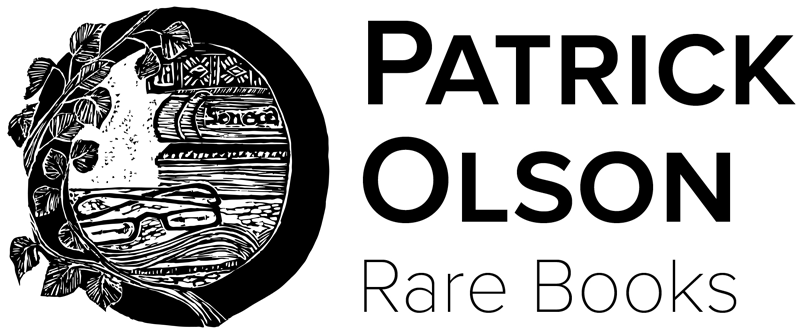Children's rebus scrapbook




Children's rebus scrapbook
Album of French rebuses
[France? printed ca. 1810-1830, assembled ca. 1830-1840?]
[24] leaves (the last empty) | 205 x 149 mm
A beguiling album of some 300 little French rebuses, many of them stylistically similar, and perhaps coming from a number of cohesive series. Those adhered to the first six leaves—with a few similar examples later in the album—form one of the largest such groups. As they appear on a variety of papers both laid and wove, we're inclined to date them to that transitional period, ca. 1830. Most of the remaining rebuses seem a hair earlier, ca. 1810-1820. More than rebuses, the last six and a half pages contain a variety of miniature illustrations, many of them resembling those found on early catchpenny prints, a few of them brightly hand-colored, though most seem to predate the era of the exuberantly colorful épinal print. ¶ Since numerous ancient writing systems depended on the rebus principle, the genre can reasonably claim an ancient history. And as the form of pictorial word play we know today, it dates to at least the end of the Middle Ages. "In the wake of the great rhetoricians in the second half of the fifteenth century and the beginning of the sixteenth, puns in which pictures took the place of the corresponding homophone became popular in France, in poems, on coats of arms, mottoes, medals, and even tombstones." French poet Jean Molinet, for example, occasionally drew a pansy to stand in for pensée, and a ca. 1500 collection of devotional rebuses survives from northern France. "During the 17th century the French adopted the rebus as a form of amusement, and its popularity quickly spread to England, where people enjoyed thinking up ways to express their names as picture puzzles" (Two Rebuses). By the time our examples were printed, the genre was especially popular among the young, "as they were supposed to sharpen the minds of children" (Forum). ¶ It's possible these little rebuses were trimmed from catchpenny or similar prints. Then again, these could be the kind of small "'fortune-telling rebuses' found in pieces of candy or sweets bought at fairs, etc.," Forum noted in its description of a ca. 1820 French guide to interpreting such rebuses. Laid into the Forum copy was one of those candy-derived rebuses, measuring 4 x 5 cm. Most of ours are of very similar size, 5 cm by 3.5 to 4 cm. Such distributed provenance may account for our variety of papers and inks more easily than accumulation by way of full-sheet prints. Incidentally, we find a guide similar to the aforementioned, and from the same publisher, which may help the curious decipher these. ¶ An extraordinary collection of juvenile ephemera, especially if these are indeed the kind of fleeting rebuses packaged with sweets.
PROVENANCE: We suspect this scrapbook belonged to a girl. The penultimate leaf bears a number of images of young women—one of them captioned Les femmes célèbres—and the final page reads like the kind of stereotypical tableau young women were taught to aspire to: a family scene at center, flanked by a young woman and a young man (the married couple), and beneath them a young woman watching a ship go out to sea (presumably with her husband on board, captioned le départ).
CONDITION: Glossy midnight blue paper-covered limp board, simply folded around the text block, which is sewn as a single gathering of 24 leaves. The text block was sewn through the cover with pink ribbon (since detached, but pieces at least still present). The rebuses are mounted to a wove paper, and we suspect the album wasn't assembled later than mid 19th century (the binding does still include a sheet of a handmade laid paper as a wraparound endpaper). The rebuses are variously engraved, etched, and woodcut and occupy [38] pages, typically eight to a page, with a variety of small-format illustrations mounted to the last six and a half pages. The rebuses are printed mostly in black on white paper, but a number were printed on blue paper, and many in ink of a different color (orange, red, green, blue, and brown). A larger yellow rebus is affixed to the inside front cover, and a larger orange rebus to the inside rear. ¶ Paper is predictably cockled from the use of adhesive, and the edges of the leaves are a bit ratty at times; some rebuses are stained. Text block is detached from its binding, though it still nestles nicely between the covers; binding extremities bumped and worn.
REFERENCES: Marianne Grivel, "165 Anonymous, Rhebus sur les miseres de la France," The French Renaissance in Prints (1994), p. 421 (cited above, on a 1613 rebus woodcut); Anna Dlabačová, "The Art of Observance," Rethinking the Dialogue between the Verbal and the Visual (2023), p. 245 (for Molinet and the ca. 1500 collection); Two Rebuses from the American Revolution in Facsimile (1973), "Historical Background" (cited above); Forum Antiquarian Booksellers, Catalogue 100: The Children's World of Learning (2000), v. 8, p. 1168, #4410 (cited above), #4411 (describing the ca. 1820 Nouvelle clef de rébus)
Item #820
